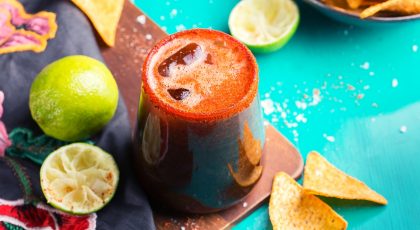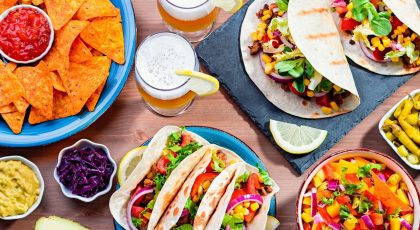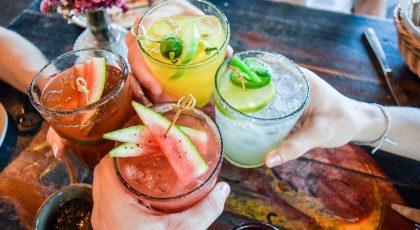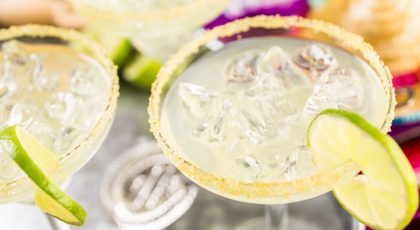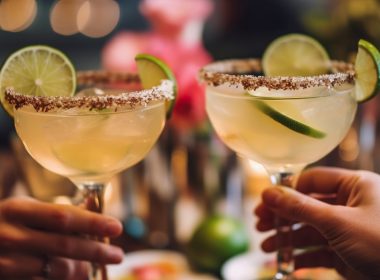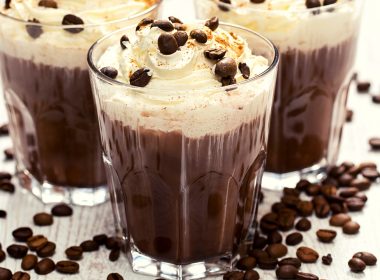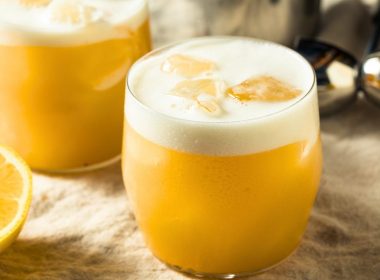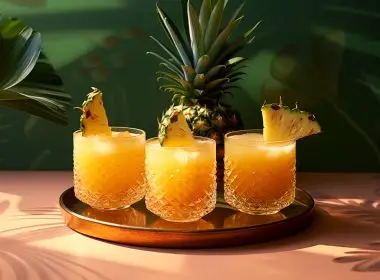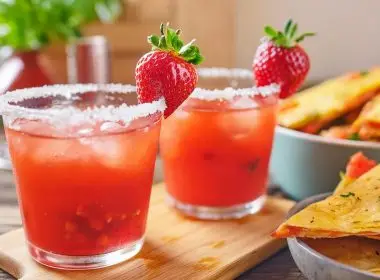What’s the Difference Between Mezcal and Tequila?
Jump to:
Many people think of mezcal as tequila’s smoky cousin, and sure, that’s true enough. But mezcal is so much more than that. And while both tequila and mezcal are made with the agave plant, these popular Mexican drinks are made differently, resulting in entirely different flavors.
In this handy guide, we take you through the main differences between mezcal vs tequila, how they’re produced, when to use mezcal, and the fascinating world of agave.
Overview of mezcal
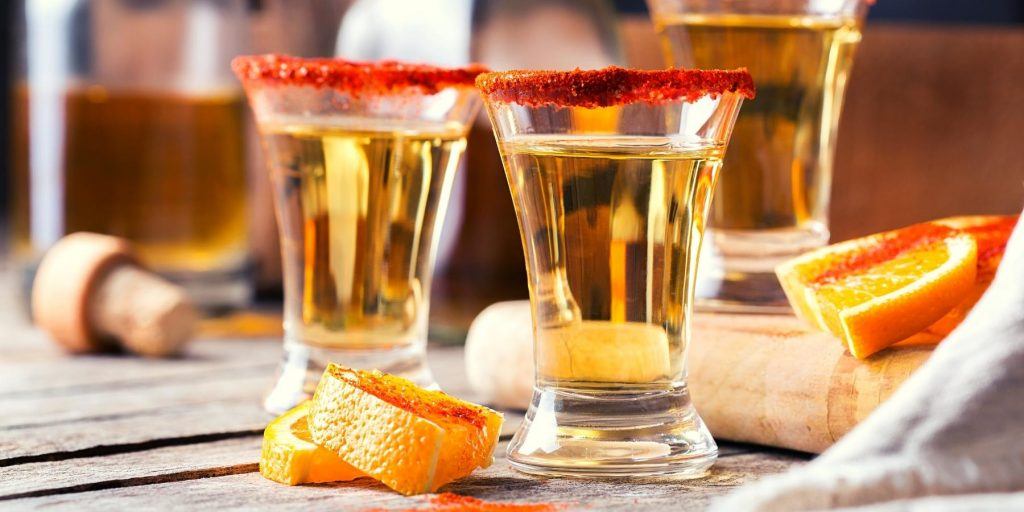
So, what is mezcal exactly?
- Production: Mezcal is made by cooking the agave in pits underground. That’s what gives mezcal its smokiness.
- Taste: Mezcal tastes complex with a warm smokiness, and the flavor will depend on the type of agave used to produce it. We tell you more about this below, so keep reading!
- ABV: At 55% Mezcal is quite high in alcohol—slowly does it!
Read next: Easy Mezcal Cocktails for Agave Lovers
Tequila overview

If that’s how mezcal works, then what’s tequila made from?
- Production. This Mexican fermented and distilled spirit is made from only one variety of agave: the blue Weber agave plant.
- Taste. The taste will depend on the type of tequila you’re drinking. Tequila blanco (or silver tequila) is unaged, which makes it very agave-forward. Expect notes of citrus and pepper. When you age tequila for anything between 2 – 12 months, you get tequila reposado. Known for being smooth with darker notes of caramel, vanilla and oak being prominent. Tequila añejo is aged in oak for 1 – 4 years, so you know it will have richer flavor profiles. This is definitely not a tequila to mix into a cocktail, and is best enjoyed straight up.
- ABV. Tequila is lower in alcohol than mezcal by 15% and comes in at an ABV of 40%.
Learn more: A Beginner’s Guide to the Different Types of Tequila
Tequila is a type of mezcal, but mezcal isn’t always a tequila
Confusing, right? This is a statement you’ll definitely come across when researching mezcal. But what does it even mean? Simply put, it means that mezcal can be any liquor produced from a variety of agave, while tequila is made with the blue Weber agave species only and is a form of mezcal.
Key differences between mezcal & tequila
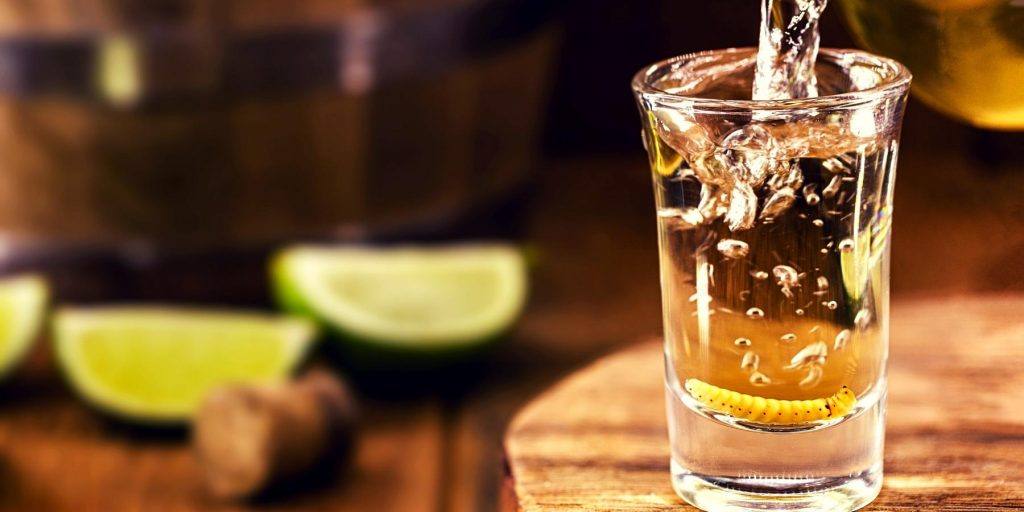
What’s the difference between mezcal vs tequila? In a nutshell, they’re produced in different regions, through different methods of cooking and different distillation processes. Both have distinct flavor profiles, with mezcal being more smoky and tequila sweeter and not smoky at all. The biggest difference between mezcal and tequila is the agave variations, where it’s produced, and how it’s cooked and distilled. Let’s start with the agave first.
Agave variations
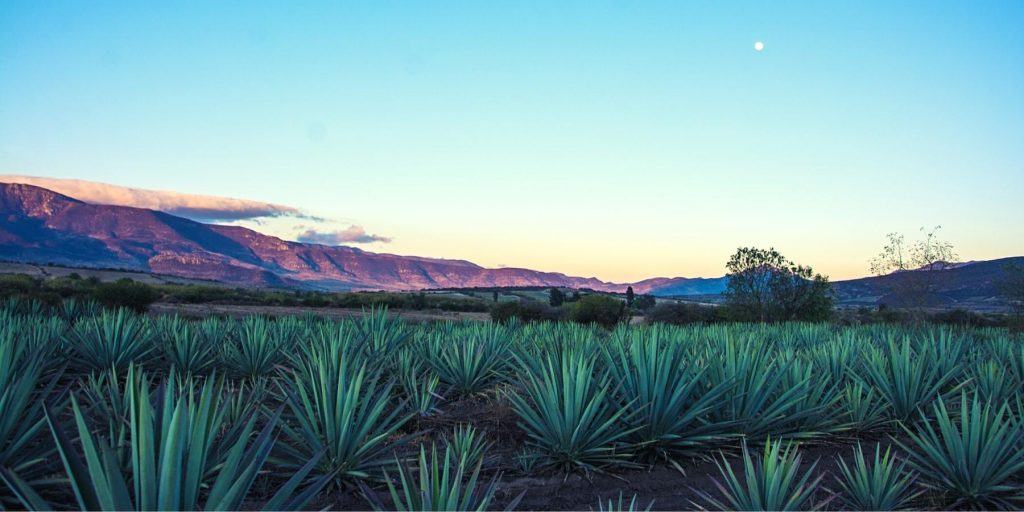
Remember how we said that tequila is only made with one variety of agave (blue Weber)? Well, mezcal can be made with over 40 agave varieties! Here are some quick facts about five of the most well-known agaves used for mezcal.
- Espadín (Agave Angustifolia)
This agave is a hard little worker and is responsible for around 80% of all mezcal that is produced in Mexico. This variety is popular because of its high concentration of sugar, which results in bigger amounts of mezcal being produced. Taste-wise, an Espadín mezcal is full-bodied and slightly sweet with smoky honey and sweet potato notes.
- Mexicano (Agave Rhodacantha)
This scarce giant is admired by many producers for its distinct qualities that result in a mezcal that is smooth, fruity and smoky with just a hint of anise.
- Arroqueño (Agave Americana)
Just like the Mexicano agave, this agave variety is a monster. They can grow to be 8 feet tall and 11 feet around. The piñas can weigh more than 450 pounds, which is great news for mezcal producers, who manage to get around 30 bottles per plant. This mezcal is less sweet and has a lovely herb and spice flavour that shines through with every sip.
- Karwinskii (Agave Karwinskii)
Easily recognized by their piñas that look like logs of hardwood, the Karwinskii agave plant is the proud parent of several subspecies—all used in mezcal production. Mezcals made with this variety can vary a lot in flavor, but most have herb and roast vegetable and peanut flavors.
- Tepeztate (Agave marmorata)
This agave plant takes up to 35 years to reach maturity and is a low-yield variety. If you ever spot a bottle of Tepeztate mezcal (and you have the budget) you absolutely have to try it. This is the most aromatic of all mezcals and has an earthy aroma, which makes sense if you consider how long it lives in there before being harvested. Surprisingly mezcals made with this agave variety also have notes of ripe tropical fruit. A special mezcal, indeed!
You might also like: 14 Best Drinks to Mix with Tequila in 2023
Location of production
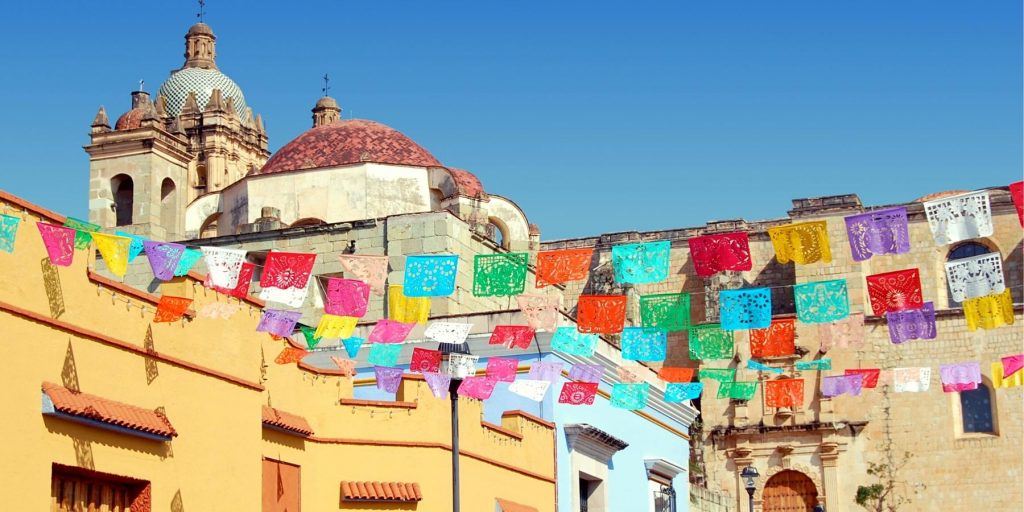
When it comes to the sources of mezcal and tequila, these popular Mexican spirits come from different regions. Tequila is harvested in five major regions across Mexico: Jalisco, Tamaulipas, Michoacán, Nayarit, and Guanajuato. Mezcal, on the other hand, comes from more locations. The city of Oaxaca is probably the most famous with 85% of the country’s mezcal produced here.
Method of cooking
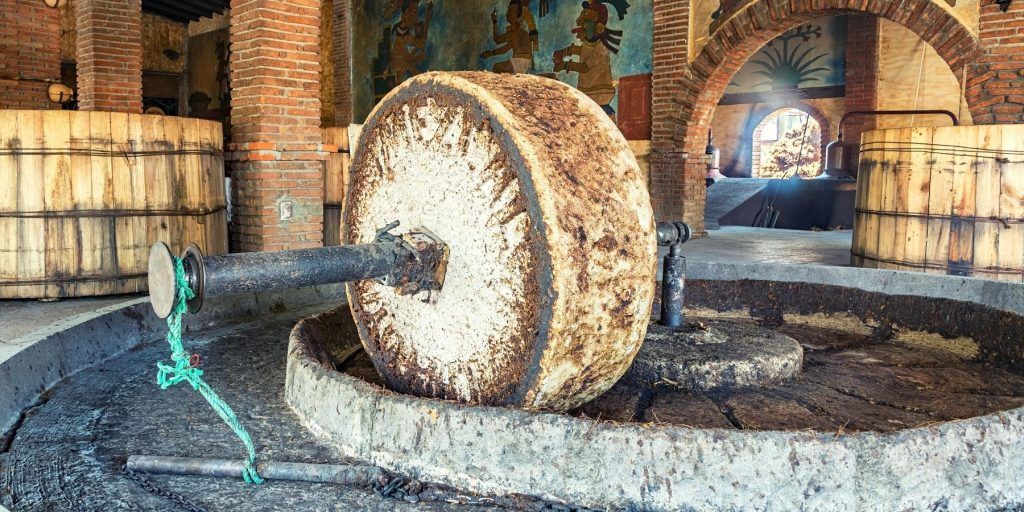
Both spirits use the same method of crushing the piñas (or hearts) with tahonas. These stone mills are made from volcanic rock and are operated by animals or humans to extract the agave plant juices.
A big flavor difference between the two spirits is the way they get cooked up. In tequila production, the agave hearts are steamed. Mezcal, on the other hand, calls for piñas to be roasted underground in wood fire pit ovens, giving it that signature mezcal smokiness.
Anyone reading this craving some mezcal cocktails yet? We definitely are!
Method of distillation
Once tequila has been steamed above ground, it gets double or triple-distilled in copper pots. Mezcal on the other hand, is distilled in clay pots.
Categories & classifications
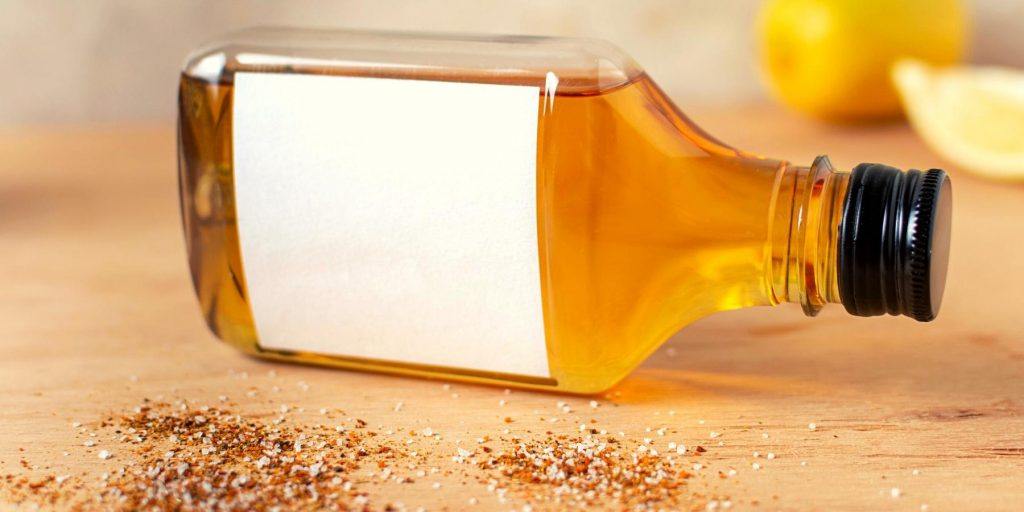
Mezcal and tequila have their own categories, just like you’d find in wine (think Sauvignon blanc, Merlot, Pinot Noir and more). Tequila is available in three varieties: blanco, reposado and añejo. Mezcal comes in añejo, reposado and joven varieties. Joven is mezcal that’s been aged for the shortest amount of time, while añejo is aged for the longest. These classifications should be clearly marked on the bottle’s label, so keep your eyes peeled and make sure you know what you’re buying.
To confuse things a little more, let’s quickly cover mezcal categories. There are three of them, set out by the Consejo Regulador del Mezcal. These categories are Mezcal, Mezcal Artesanal, and Mezcal Ancestral. These categories prescribe the different methods producers can legally use to make this spirit.
Salud! Your Guide to the Best Tequila for Margaritas
When to use mezcal or tequila?
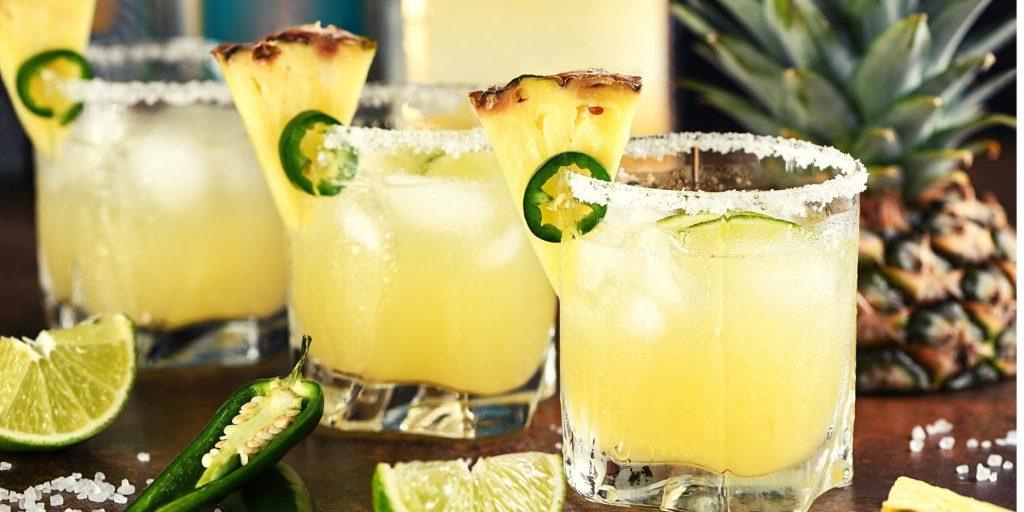
Mezcal adds smokiness to drinks giving them a whole new level and depth of flavor. Use these popular Mexican spirits for some modern cocktails at your next Taco Tuesday with friends for something a little special. When you mix tequila and mezcal you add a smokey twist to classic drinks. We suggest trying your hand at mixing up Mezcal Margaritas or Mezcal Palomas. Double yum! If you want a tequila-only cocktail, mix up the classics like Margaritas or some classic Palomas.
More recipes to try! Mezcal Margarita | Naked & Famous | Tequila Sunrise | Tequila Sour


